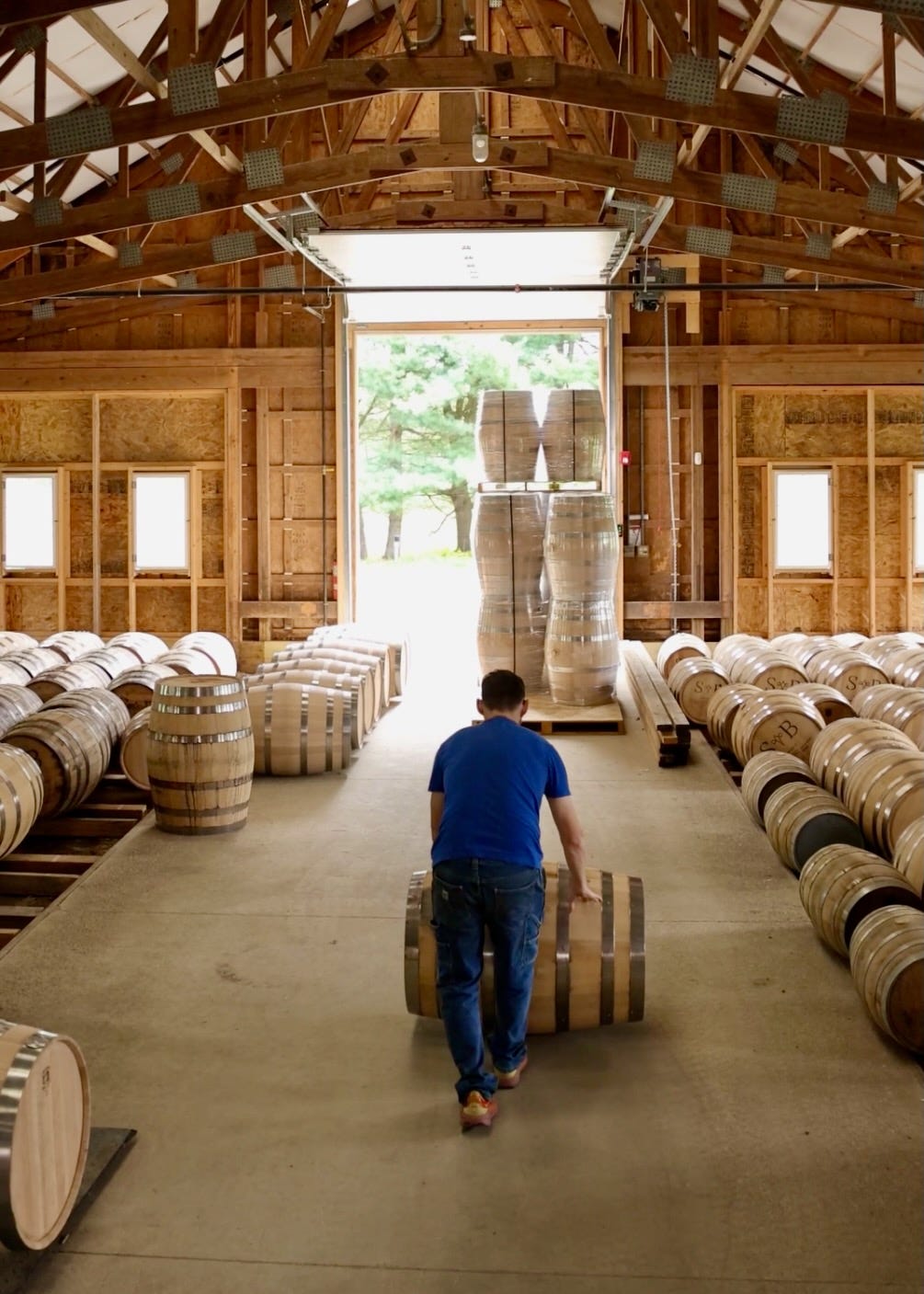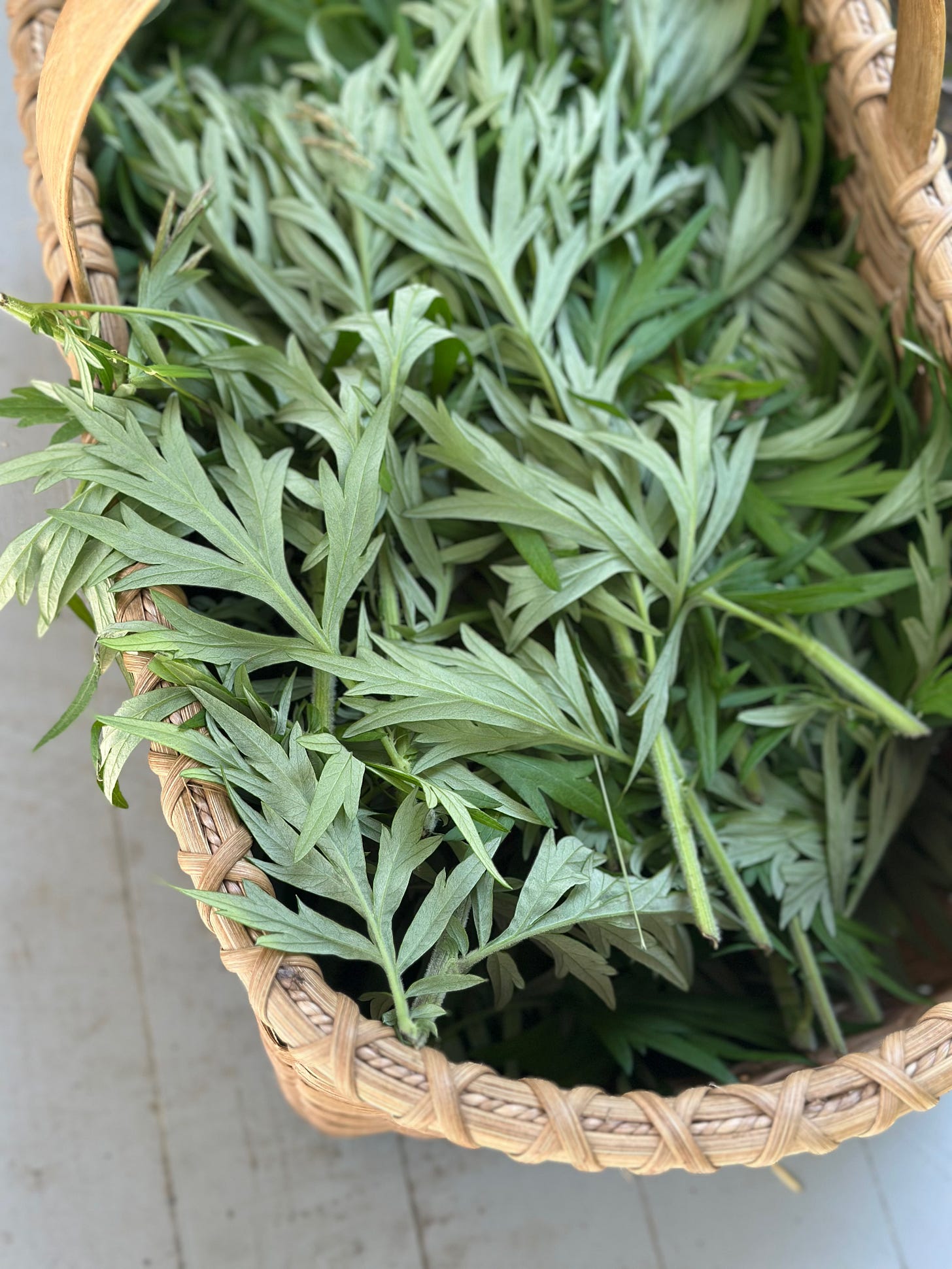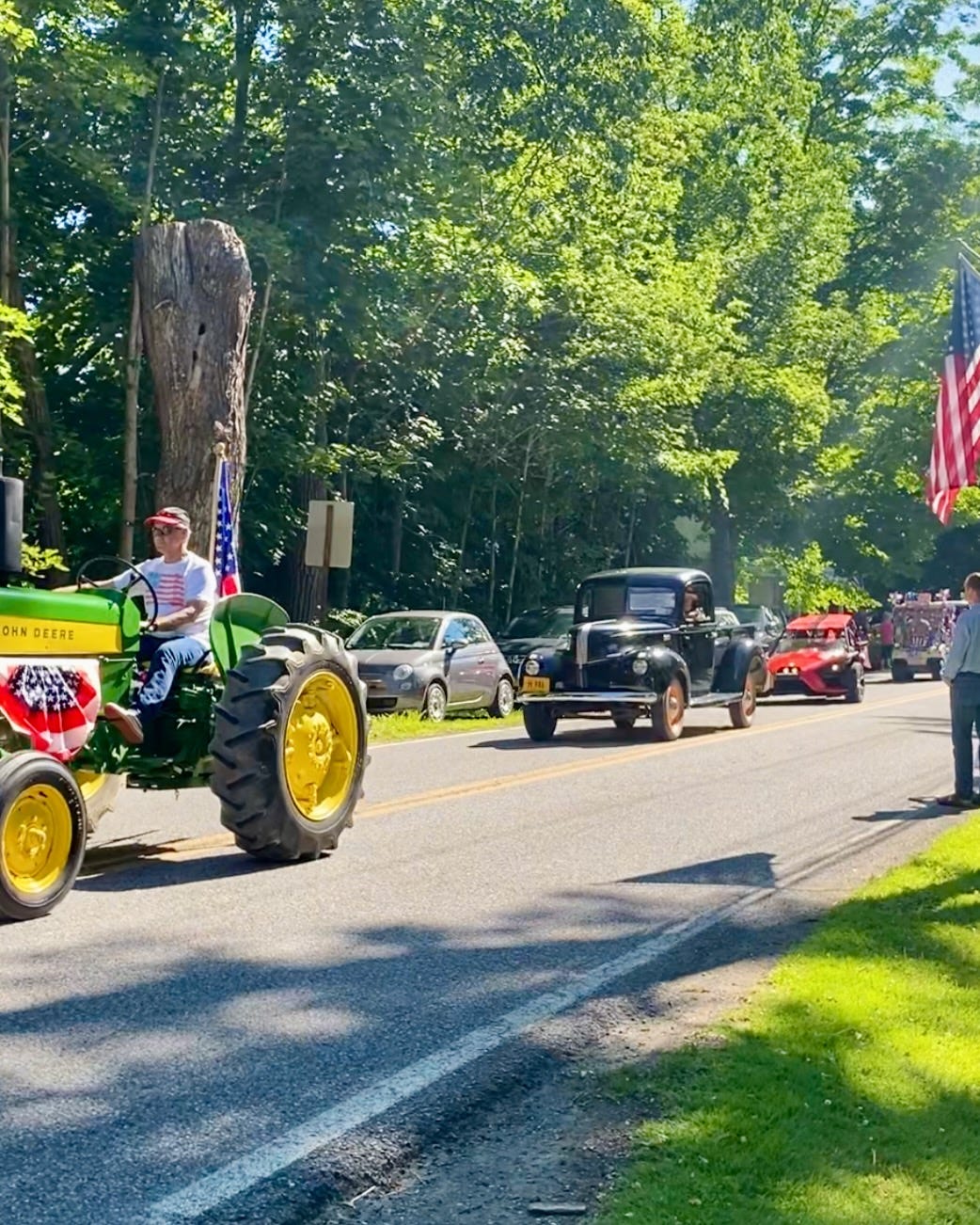
June was dedicated exclusively to single malt production, which we carried on into July. We will finish “mashing in” twenty-three batches of single malt before we return to rye production later this month, using nearly 26,000 pounds of malted barley in total and yielding approximately 28 barrels of whiskey. At present we are barreling approximately twenty barrels of whiskey each month. This pace puts us ahead of our 2025 production schedule. If we maintain this pace we may take a “quiet period” later this year. Common in larger distilleries, the quite period is a span of two to four weeks when production temporarily ceases, allowing for equipment overhauls and general facilities maintenance. In our case our equipment is relatively new, so our focus will be on prepping our bottling line and making cosmetic updates to the still house, barrel house and exterior.
This late-spring and summer we have also been collecting a variety of botanicals in anticipation of making a small batch of vermouth that will eventually be used for cocktails exclusively in our tasting room. Our goal is to gather all of the aromatics from the farm and surrounding area so that the finished recipe complements the inherent terroir of our whiskeys. We are fortunate to have a wide variety of edible botanicals surrounding our farm. Thus far we have foraged a variety of florals, bitters and herbs, including linden blossom, yarrow, mugwort, apple mint, red clover blossom, rosa rugosa petals, cherry bark, elderflowers, and coriander seeds. We will eventually add sumac, wild thyme, dandelion root, and green hickory nuts to our stockpile of ingredients later this month, and more as the season progresses, then we can begin developing our recipe.

In whiskey, everything matters - but some elements matter more than others. One of the most consequential elements of all is yeast. Yeast is one of the three primary ingredients in whiskey (grain and water being the other two), and is essential for the production of alcohol. Yeast cells consume simple starches from the grain and break them down into carbon dioxide and ethyl alcohol (i.e., ethanol). This is the process of fermentation, and in our typical fermentation the yeast produces somewhere in the range of 45 gallons of ethanol for each 500 gallon batch. The resulting liquid is called “distiller’s beer,” which is about 9% alcohol by volume. We later separate that ethanol from the rest of the solution via the process of distillation.
For many distilleries, ethanol production is primary, and yeast strains are chosen to maximize output. But yeast produces more than just ethanol and CO2. It also produces trace amounts of esters, fusel alcohols, acids, aldehydes, and phenolic compounds. Each of these can have an impact on flavor, contributing a spectrum of fruity, floral, spicy, grassy, and earthy notes that are carried on into the finished whiskey.
Yeast selection is therefore critical in flavor development, which we value far more than efficiency alone. Early on in our production we experimented with several dozen yeast varietals in both pilot and production batches, ranging from various beer brewer’s yeasts, commercial whiskey strains, wine maker’s yeasts, and even common baker’s yeast (Fleischman’s is indeed flavorful, but horribly inefficient). We also experimented with natural fermentation, common in the wine-making world, allowing ambient yeast in the air and on the grain to convert our starches into ethanol and flavor.
Over time we honed in on one specific strain of yeast that seems to bring the most out of our whiskey. It captures our grain profile - earthy spiciness of rye and the floral, fresh-cut-grass of barley - but also brings forward bright flavors of stone fruit, green apple and orange peel. Where other yeasts can veer in one direction or another - all fruit, or all grain - the yeast we’ve landed on is complex, and produces a depth of layered flavors that seem to harmonize together, and bring the best out of our grain and water. We’ve also learned how to best manage our yeast during fermentation to maximize flavor - a topic we will explore in a future newsletter.
Our 2025 harvest kicked off last week when we harvested ten acres of winter barley. The initial crop looks promising, and even more so given the weather extremes of the past growing season. Our Danko and Hazlet rye varieties are still maturing in the fields and will likely be ready by mid-July. The Excelsior Gold barley we planted this spring will be the final variety of grain we harvest this season.
After the rye and barely are collected by the combine harvester, the remaining stalks - or straw, as it’s know - are cut and baled into large rectangular bricks. These will be used for animal bedding and feed. Barley bales are especially prized as feed for donkeys. We have also learned that barley bales can be used for algae control, and have recently shared a few bales with pond-owning friends and neighbors.
July is an extremely busy time on the farm. In addition to the annual grain harvest, the remaining fields are being hayed. This recent stretch of wet weather made it challenging to complete our spring planting, and it also delayed the first cutting of hay, which usually would have been completed in June. For an additional complication, the mammoth red clover we planted as cover crop last year lived up to its name, achieving mammoth proportions. It was unclear if we could cut and bail the clover, given the excess moisture in its thick stem. Fortunately, a recent hot and dry stretch of weather made for ideal hay making conditions, and the clover is now off the field, packed into large round bales that will last through the winter.
Chatham Summerfest, Chatham. Saturday, July 12th, 10am-8pm. www.visitchathamny.com
Gee’s Bend Quilts: The Next Generation, Spencertown and Austerlitz. July 12th - August 3rd. www.spencertownacademy.org
Basilica Hudson Farm & Flea Summer Market, Hudson. July 12th & 13th, 10am – 5pm both days. www.basilicahudson.org
Art Omi: Artists Open Studios, Ghent. July 12th, 1pm-4pm (registration appreciated). www.artomi.org
Upstate Art Weekend, multiple locations throughout the Catskill Mountains and Hudson Valley. Thursday, July 17th, through Monday, July 21th. www.upstateartweekend.org
Equine Advocates Public Open Day, Chatham. July 19th, 11am-4pm. www.equineadvocates.org
Blueberry Festival Old Austerlitz, Austerlitz. July 27, 9:00 am - 3:00 pm. www.oldausterlitz.org
We hope you enjoyed our free newsletter. Be sure to subscribe and please share with a friend if you think they would enjoy it as well. For more information about Silver Brothers, visit silverbrothers.com and follow us on Instagram @silverbrotherswhiskey.











